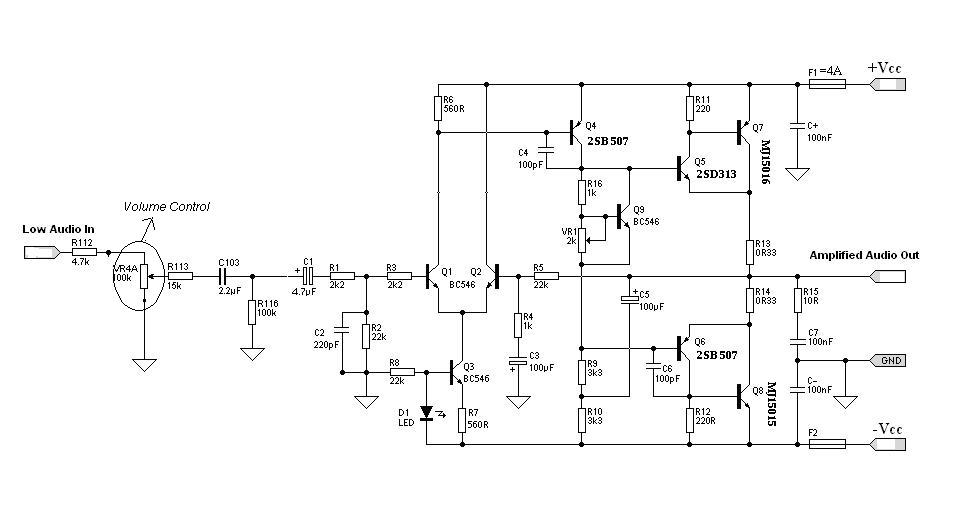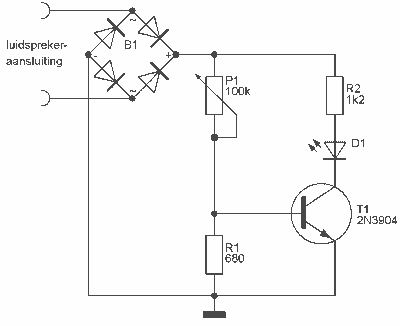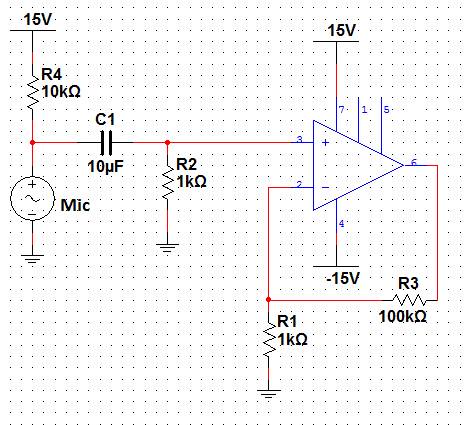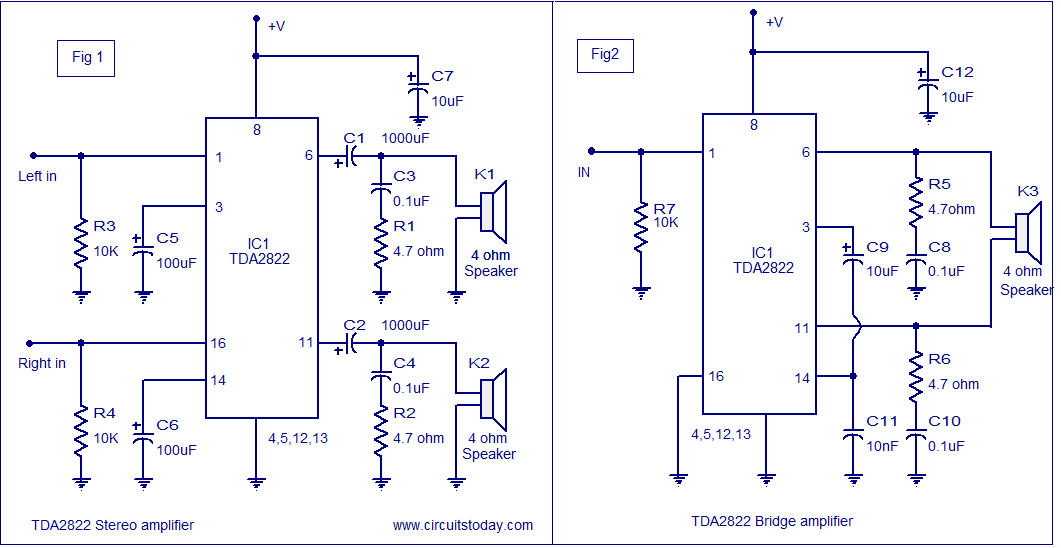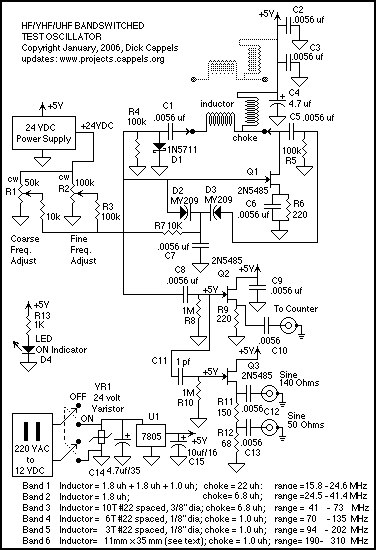
Audio Oscillator
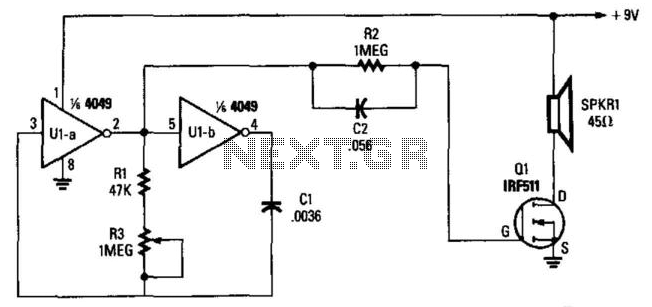
Two gates, U1A and U1B, of a 4049 hex inverter, are connected in a VFO circuit. Components R1, R3, and C1 set the frequency range of the VFO. With the given values, the circuit's output can range from a few hundred hertz to over several thousand hertz by adjusting R3. The simplest way to change the frequency range of the oscillator is to use different capacitance values for C1. A rotary switch, teamed up with a number of capacitors, can be used to select the desired frequency range.
The circuit employs two gates from a 4049 hex inverter, specifically U1A and U1B, which are configured as part of a Voltage-Controlled Oscillator (VFO). The primary components that influence the frequency output are resistors R1 and R3, along with capacitor C1. The frequency output of the VFO is adjustable and can span from a few hundred hertz to several thousand hertz, depending on the resistance value set by R3.
The frequency modulation is achieved through the adjustment of R3, which alters the charging and discharging time of capacitor C1, thereby changing the oscillation frequency. Additionally, the circuit design allows for further frequency manipulation by substituting different capacitance values for C1. This can be efficiently implemented using a rotary switch that is connected to a selection of capacitors. By rotating the switch, the user can select from multiple capacitance options, allowing for a versatile frequency range adjustment without needing to physically change components.
In practical applications, this VFO circuit can be utilized in various electronic devices that require frequency generation, such as signal generators, tone generators, or in communication systems. The choice of the 4049 hex inverter provides a reliable and straightforward method for creating oscillatory signals, making it suitable for both amateur and professional electronic projects. The overall design emphasizes flexibility and ease of use, allowing for quick adjustments to meet specific frequency requirements. Two gates, U1A and U1B O/3 of a 4049 hex inveter), are connected in a VFO circuit. Components Rl, R3, and CI set the frequ ency range of the VFO. With the values given, the circuit"s output can range from a few hundred hertz to over several thousand hertz by adjusting R3. The simplest way to change the frequency range of the oscillator is to use different capacitance values for CI.
A rotary switch, teamed up with a number of capacitors, can be used to select the desired frequency range.
The circuit employs two gates from a 4049 hex inverter, specifically U1A and U1B, which are configured as part of a Voltage-Controlled Oscillator (VFO). The primary components that influence the frequency output are resistors R1 and R3, along with capacitor C1. The frequency output of the VFO is adjustable and can span from a few hundred hertz to several thousand hertz, depending on the resistance value set by R3.
The frequency modulation is achieved through the adjustment of R3, which alters the charging and discharging time of capacitor C1, thereby changing the oscillation frequency. Additionally, the circuit design allows for further frequency manipulation by substituting different capacitance values for C1. This can be efficiently implemented using a rotary switch that is connected to a selection of capacitors. By rotating the switch, the user can select from multiple capacitance options, allowing for a versatile frequency range adjustment without needing to physically change components.
In practical applications, this VFO circuit can be utilized in various electronic devices that require frequency generation, such as signal generators, tone generators, or in communication systems. The choice of the 4049 hex inverter provides a reliable and straightforward method for creating oscillatory signals, making it suitable for both amateur and professional electronic projects. The overall design emphasizes flexibility and ease of use, allowing for quick adjustments to meet specific frequency requirements. Two gates, U1A and U1B O/3 of a 4049 hex inveter), are connected in a VFO circuit. Components Rl, R3, and CI set the frequ ency range of the VFO. With the values given, the circuit"s output can range from a few hundred hertz to over several thousand hertz by adjusting R3. The simplest way to change the frequency range of the oscillator is to use different capacitance values for CI.
A rotary switch, teamed up with a number of capacitors, can be used to select the desired frequency range.
